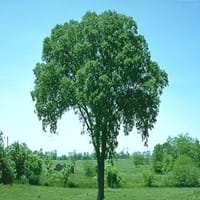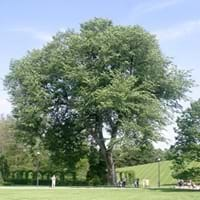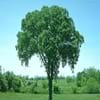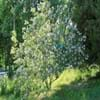Life Span
Perennial
Perennial
Origin
North America
South-Central United States, Texas, Mexico
Types
Bergmann's Elm, Chestnut-leafed Elm, Hangzhou Elm
Cedars
Habitat
Woodland Garden Canopy
River side, Woodlands
USDA Hardiness Zone
3-9
7-9
Sunset Zone
1a, 1b, 2a, 2b, 3a, 3b, 4, 5, 6, 7, 8, 9, 10, 11, 14, 15, 16, 17, 18, 19, 20, 21
Not Available
Habit
Upright/Erect
Oval or Rounded
Flower Color
Green
White, Ivory
Flower Color Modifier
Bicolor
Bicolor
Fruit Color
Tan
Red, Light Green, Tan
Leaf Color in Spring
Light Green
Green, Yellow green
Leaf Color in Summer
Dark Green
Green, Dark Green
Leaf Color in Fall
Light Yellow
Yellow, Green, Yellow green
Leaf Color in Winter
Not Available
Not Available
Leaf Shape
Ovate
Elliptic, toothed
Plant Season
Spring, Summer, Fall, Winter
Spring, Summer, Fall
Sunlight
Full Sun
Full Sun, Partial Sun
Type of Soil
Loam
Clay, Loam, Sand
The pH of Soil
Acidic, Neutral
Acidic, Neutral, Alkaline
Soil Drainage
Average
Well drained
Bloom Time
Early Spring
Late Summer, Early Fall
Tolerances
Pollution
Pollution, Drought
Where to Plant?
Ground
Ground
How to Plant?
Budding, Grafting, Seedlings, Semi-hardwood cuttings, Softwood cuttings
Seedlings, Stem Planting
Plant Maintenance
Medium
Medium
Watering Requirements
Average Water Needs, Do Not over Water, Requires regular watering
Keep the ground moist but not water-logged, Requires a lot of watering, Requires watering in the growing season, Water Deeply
In Summer
Lots of watering
Lots of watering
In Spring
Moderate
Moderate
In Winter
Average Water
Average Water
Soil pH
Acidic, Neutral
Acidic, Neutral, Alkaline
Soil Type
Loam
Clay, Loam, Sand
Soil Drainage Capacity
Average
Well drained
Sun Exposure
Full Sun
Full Sun, Partial Sun
Pruning
Remove damaged leaves, Remove dead branches, Remove dead leaves, Remove dead or diseased plant parts, Remove deadheads
Prune to stimulate growth, Remove damaged leaves, Remove dead branches, Remove dead leaves, Remove hanging branches
Fertilizers
Complete balanced fertilizer, fertilize in spring
All-Purpose Liquid Fertilizer, fertilize in growing season, Nitrogen
Pests and Diseases
Red blotch
Bacteria wilt, Beetles, Red blotch
Plant Tolerance
Pollution
Salt, Shade areas
Flowers
Yes
Insignificant
Flower Petal Number
Single
Single
Foliage Texture
Medium
Fine
Foliage Sheen
Matte
Glossy
Attracts
Birds, Butterflies, Not Available
Butterflies
Aesthetic Uses
Not Used For Aesthetic Purpose
Landscape Designing
Beauty Benefits
Good for skin and hair
Not Available
Environmental Uses
Air purification, Nesting sites for birds, Shadow Tree
Air purification, Amazing growth rate, Erosion control, Food for birds, Food for insects, Nesting sites for birds, Prevent Soil Erosion
Medicinal Uses
Antispasmodic, Astringent, Birthing aid, Haemostatic, Salve
No Medicinal Use
Part of Plant Used
Bark, Fibre, Leaves
Stem, Tree trunks
Other Uses
Container, String, Used for woodware, Used in paper industry
Used as firewood, Used for woodware, Used in construction
Used As Indoor Plant
No
No
Used As Outdoor Plant
Yes
Yes
Garden Design
Feature Plant, Shade Trees, Street Trees
Feature Plant, Shade Trees, Street Trees, Topiary / Bonsai / Espalier
Botanical Name
ULMUS americana 'Augustine'
ULMUS crassifolia
Common Name
American Elm, Augustine Elm
Cedar Elm
In Hindi
American Elm Tree
देवदार एल्म
In German
Amerikanische Ulme
Cedar Elm
In French
Américaine Elm Tree
Cedar Elm
In Spanish
Olmo Americano Árbol
Cedar Elm
In Greek
American Elm Tree
Cedar Elm
In Portuguese
Árvore de olmo americano
Cedar Elm
In Polish
Amerykańska Elm Tree
Cedar Elm
In Latin
Latin ulmo
Ulmus Cedar
Phylum
Magnoliophyta
Magnoliophyta
Class
Magnoliopsida
Magnoliopsida
Clade
Angiosperms, Eudicots, Rosids
Angiosperms, Eudicots, Rosids
Tribe
Not Available
Not Available
Subfamily
Not Available
Not Available
Number of Species
Not Available
Not Available
Importance of American Elm and Cedar Elm
Want to have the most appropriate plant for your garden? You might want to know the importance of American Elm and Cedar Elm. Basically, these two plants vary in many aspects. Compare American Elm and Cedar Elm as they differ in many characteristics such as their life, care, benefits, facts, etc. Every gardener must at least have the slightest clue about the plants he wants to plant in his garden. Compare their benefits, which differ in many ways like facts and uses. The medicinal use of American Elm is Antispasmodic, Astringent, Birthing aid, Haemostatic and Salve whereas of Cedar Elm is No Medicinal Use. American Elm has beauty benefits as follows: Good for skin and hair while Cedar Elm has beauty benefits as follows: Good for skin and hair.
Compare Facts of American Elm vs Cedar Elm
How to choose the best garden plant for your garden depending upon its facts? Here garden plant comparison will help you to solve this query. Compare the facts of American Elm vs Cedar Elm and know which one to choose. As garden plants have benefits and other uses, allergy is also a major drawback of plants for some people. Allergic reactions of American Elm are Pollen whereas of Cedar Elm have Skin rash respectively. Having a fruit bearing plant in your garden can be a plus point of your garden. American Elm has no showy fruits and Cedar Elm has no showy fruits. Also American Elm is flowering and Cedar Elm is not flowering . You can compare American Elm and Cedar Elm facts and facts of other plants too.





